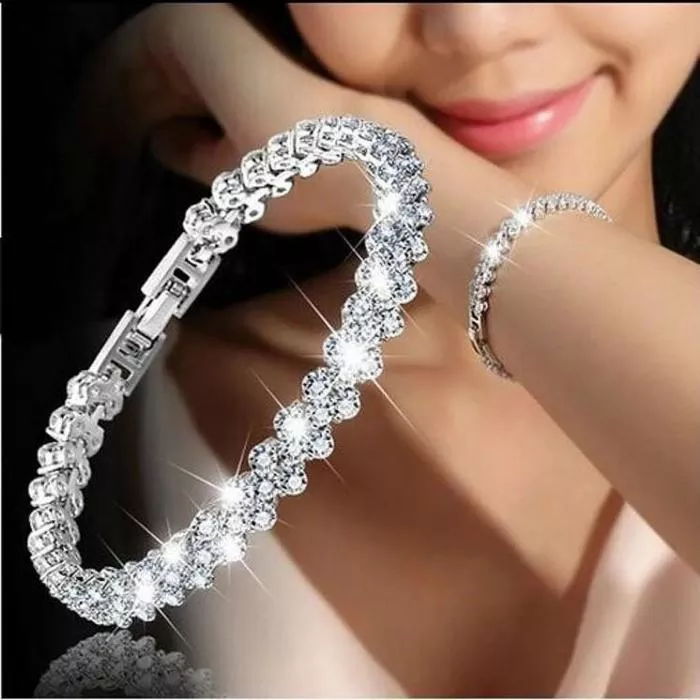A diamond bracelet is not only a beautiful accessory but also a significant investment. To ensure its lasting sparkle and integrity, proper care is essential. This guide covers everything you need to know, from regular cleaning to professional inspections, as well as storage and repair tips.
Regular Cleaning
Keeping your diamond bracelet clean is crucial to maintaining its brilliance. Dirt, oils, and lotions can dull the surface of the diamonds, diminishing their sparkle.
Gentle Cleaning Methods
To clean your diamond bracelet, use a solution of mild soap and warm water. Fill a small bowl with warm water and add a few drops of gentle dish soap. Place the bracelet in the solution for a few minutes to loosen any dirt or grime.
Soft Brush Usage
Once soaked, use a soft toothbrush (preferably one with soft bristles) to gently scrub the diamonds and the metal. Focus on areas where dirt can accumulate, such as the back of the stones and between links. Avoid using abrasive brushes or harsh materials that can scratch the surface.
Rinsing and Drying
After cleaning, thoroughly rinse the bracelet under warm water to remove any soap residue. Be sure to hold the bracelet over a sink or towel to avoid losing it. To dry, gently pat the bracelet with a soft, lint-free cloth. Avoid using paper towels, as they can leave fibers behind or cause scratching.
Professional Cleaning
While regular cleaning at home is effective for maintaining your diamond bracelet, there are times when professional cleaning is necessary.
When to Seek Professional Help?
If your bracelet is covered in deep grime, or if the diamonds have lost their sparkle despite regular cleaning, it’s time to seek professional help. A jeweler can perform a deeper clean that reaches areas you can’t access on your own, using ultrasonic or steam cleaning methods.
Frequency of Professional Cleaning
Even if you regularly clean your bracelet, it’s advisable to have it professionally cleaned once or twice a year. This ensures your bracelet stays in optimal condition and allows for a thorough inspection by a jeweler to check for any potential issues.
Proper Storage
Proper storage is key to preventing damage and maintaining the condition of your diamond bracelet.
Individual Storage
Always store your diamond bracelet separately from other jewelry pieces to avoid scratches and tangling. Diamond is one of the hardest materials, but it can still scratch softer metals or stones.
Soft Lined Jewelry Boxes
Use a soft-lined jewelry box or pouch to store your bracelet. These protect the bracelet from dust, moisture, and accidental impact. Soft linings, such as velvet or silk, provide cushioning that helps preserve the bracelet’s condition.
Avoiding Exposure to Chemicals
Diamond bracelets should be kept away from household chemicals, perfumes, lotions, and hair products. These substances can cause tarnishing and damage to the bracelet’s metal or affect the diamond’s clarity. Make it a habit to remove the bracelet before applying any chemicals to your skin or hair.
Regular Inspections
Regularly inspecting your diamond bracelet helps prevent small issues from escalating into larger ones.
Checking for Loose Stones
Inspect the bracelet for any loose diamonds. Gently tap each stone to check if it is secure in its setting. If you notice any movement, it’s important to have the prongs or setting checked by a professional.
Professional Inspections
It’s recommended to have your bracelet professionally inspected at least once a year. Jewelers can check for loose stones, damaged prongs, or worn-out links that may not be visible to the naked eye. Timely inspections can save you from costly repairs down the road.
Wearing Guidelines
When wearing your diamond bracelet, following these guidelines can help minimize wear and tear.
Avoiding Wear and Tear
Remove your diamond bracelet during activities that may cause damage, such as sports, gardening, or heavy lifting. These actions can subject your bracelet to unnecessary stress, causing it to become loose or even break.
Proper Handling
Always put on and take off your diamond bracelet carefully. Avoid pulling or tugging on it, especially when removing it. The force can damage the clasp or cause the bracelet to stretch or break.
Repair and Maintenance
Even with proper care, damage can occasionally occur. Knowing how to handle repairs will keep your bracelet in good condition.
Addressing Damage Promptly
If your diamond bracelet is damaged—whether a stone becomes loose, a link breaks, or the clasp malfunctions—address the issue promptly. Delaying repairs can lead to more significant damage, potentially causing the loss of a diamond or complete breakage of the bracelet.
Finding a Reputable Jeweler
For repairs and maintenance, always choose a reputable jeweler who specializes in high-quality jewelry. Ask for recommendations, check reviews, and ensure that the jeweler has experience working with diamond bracelets. Proper repair ensures that your bracelet is restored to its original condition and remains secure for everyday wear.
Conclusion
A diamond bracelet is an elegant and timeless piece that deserves thoughtful care and attention. By regularly cleaning, storing, inspecting, and repairing your bracelet, you can ensure that it retains its beauty and durability for years to come. Following these guidelines will help protect your investment and keep your bracelet sparkling, whether worn every day or on special occasions.
Related topics:

